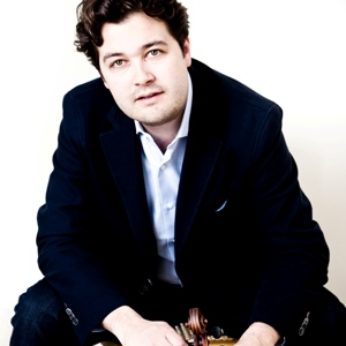Composer: Johannes Brahms (b. 1833 - d. 1897)
Performance date: 03/07/2014
Venue: Bantry Library
Composition Year: 1886
Duration: 00:18:38
Recording Engineer: Richard McCullough, RTE
Instrumentation: va, pf
Instrumentation Category:Duo
Artists:
Lawrence Power -
[viola]
Simon Crawford-Phillips -
[piano]

In the
1880s Brahms chose a charming villa on Lake Thun for his annual holidays.
During these sojourns he wrote a number of important works, often revealing a
leisurely richness well-suited to a great composer on his Summer vacation.
However there is nothing trivial about many of these compositions, in
particular this Violin Sonata, from 1886. It was written 17 years after his
first essay in the form and exhibits all the mature grandeur of the composer at
his romantic best. Indeed, some would regard it as one of his most melodious
works, with a friend of the composer calling the whole Sonata one caress. It has gained a number of
nicknames: best known is The Prize Song,
because the first three notes of the opening melody are the same as the Prize
Song in Wagner’s Die Meistersinger.
The piano
opens with The Prize Song motto, the
violin at first just adding lazy comments but gradually becoming more involved
and then providing a complete version.
The second subject also has echoes of one of the songs Brahms wrote at
this time, Immer leise. The hallmark of the movement is its amabile (loveable) marking. This music breathes
contentment and charm. There are clever features, such as the use of five-bar
phrasing, with an instrument adding a sixth bar to the other’s original five
like an echo, and the impressive ending
or coda, which drew a comparison with cloud-capped towers from the great
musicologist, Sir Donald Tovey.
The
second movement is unusual but not unknown in Brahms: alternating a slow melody
with bursts of material more suited to a jaunty Scherzo. This faster section
appears twice, using similar notes in each case but delivered at a far more
rapid pace the second time around, with lively pizzicato phrases. The finale is
a thoughtful rondo, returning to the amabile mood of the opening
movement. The rondo theme is darkly coloured with graceful, arching phrases.
The episodes between the return of the rondo theme are in a similar vein and
the usual lively contrast, typical of a rondo finale, are not to be heard in
this ruminative and warmly melodic movement. There is a weighty A minor theme
in the central episode and Brahms must have been specially fond of it, as he
reprises it in the contented coda that concludes this delectable Sonata.
Copyright © 2025 West Cork Music. All rights reserved.
Designed and developed by Matrix Internet